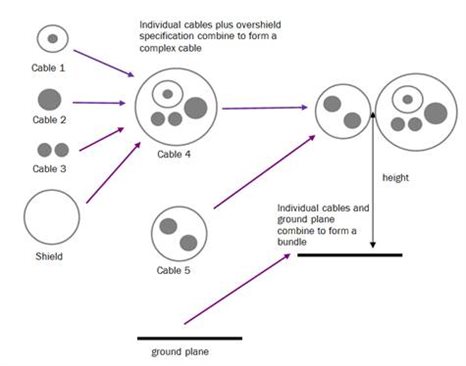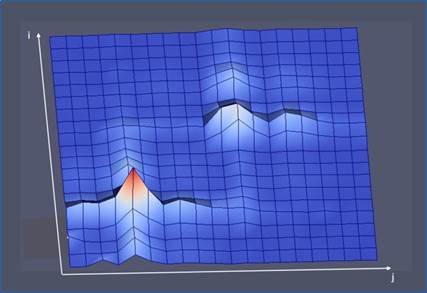Projects
ICENITE
The work is concerned with finding improved means, from an electromagnetic resilience point of view, for integrating systems in aircraft or other platforms, over the currently used un-organised bundle of cables tied into looms.
It is a TSB project funded under the Highly Innovative Technology Enablers for Aerospace 2 programme, in partnership with BAE Systems, Bombardier (Northern Ireland), the Motor Industry Research Association, Transcendata Europe Ltd, and The University of Liverpool.
The project is developing and deploying a step change in the way electromagnetic architectures are developed and installed, and their performance optimised, through the advanced use of computational electromagnetic modelling throughout the product lifecycle.
Better predictability of electromagnetic coupling levels should lead to lower margins, lower equipment qualification levels with resultant lower cost, lower volume and lower mass.

The structure shown is five wires twisted with a twist rate of 5 twists per metre and terminated at different positions. It is built using our in house Boolean Geometry Kernel software. The wires within the box are meshed using our in house Delaunay Mesher software. The coupling between wires can be solved using our in house UTLM solver. The model is built to consider the twisting effects in the wire bundle. Variability can be added to the model, such as random twist rate, different routes, different terminations, and so on.
Contact
Characterising Electromagnetic Fields of Integrated Electronic Systems in Enclosures – A Ray Wave Approach
Electronic consumer goods and internet-enabled smart infrastructures require highly integrated miniature electronic systems. One of the main problem with this miniaturisation is that unwanted interactions can arise between different components. Depending on the rate of change of currents within electronic components, these components radiate electromagnetic (EM) waves which can couple into other parts of the structure and can cause interferences. Controlling electromagnetic interferences within electronic devices is becoming an increasingly important challenge.
Read more
Open Source Cables Models for EMI Simulations
The objective of this proposal is to develop and validate sophisticated electromagnetic cable models in SPICE. These models can be used by EMC engineers in space applications for the analysis of crosstalk, shielding and field-to-cable coupling, both in the frequency domain and the time domain. In SPICE the cable models can also be combined with non-linear components. These cable models in SPICE shall be usable in both open-source and proprietary versions of SPICE. In addition, it shall be possible for researchers from industry, academia and agencies to improve these models and complement them without any restrictions. Therefore the models will have to be subject to an appropriate open-source license.
In the past several advanced distributed-parameter models of multi-conductor transmission lines have been derived. In addition advanced models for shielding and for field-to-cable coupling have been derived. However, all these cable models have not yet been implemented in circuit simulators like SPICE. Mostly these models have been incorporated in sophisticated electromagnetic simulation software packages, available at high cost for procurement and training. However, these packages offer no interaction with non-linear (active) components as is being offered.

Advanced Characterisation and Classification of Radiated Emissions in Densely Integrated Technologies (ACCREDIT)
This COST Action will fully address the challenges of the stochastic and broadband nature of EMI in current and future complex multi functional systems through a coordinated international research programme specifically aimed at
- modelling approaches to include efficient behavioural models, propagation and interaction of stochastic field distributions
- experimental methods including wideband near field probes and efficient time or frequency domain EMI measurement
The COST format will be the critical enable for initiating and consolidating structural collaboration of researches from universities and industries in fundamental research on time domain, stochastic electromagnetic effects.
Read more at COST the European Cooperation in Science and Technology EU funded programme
